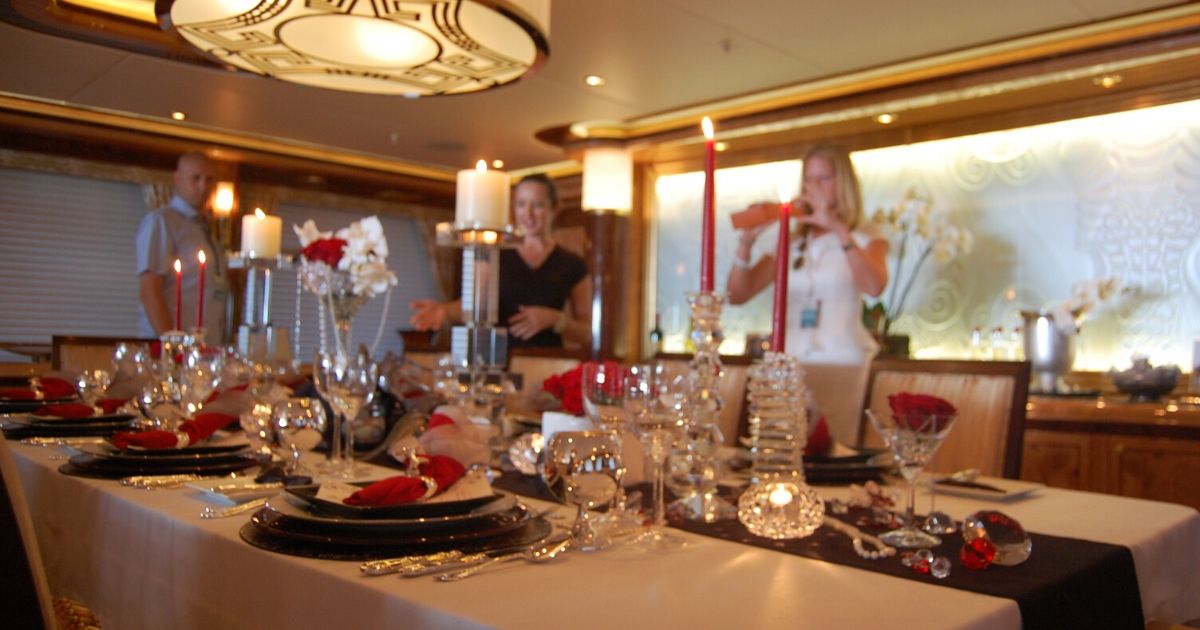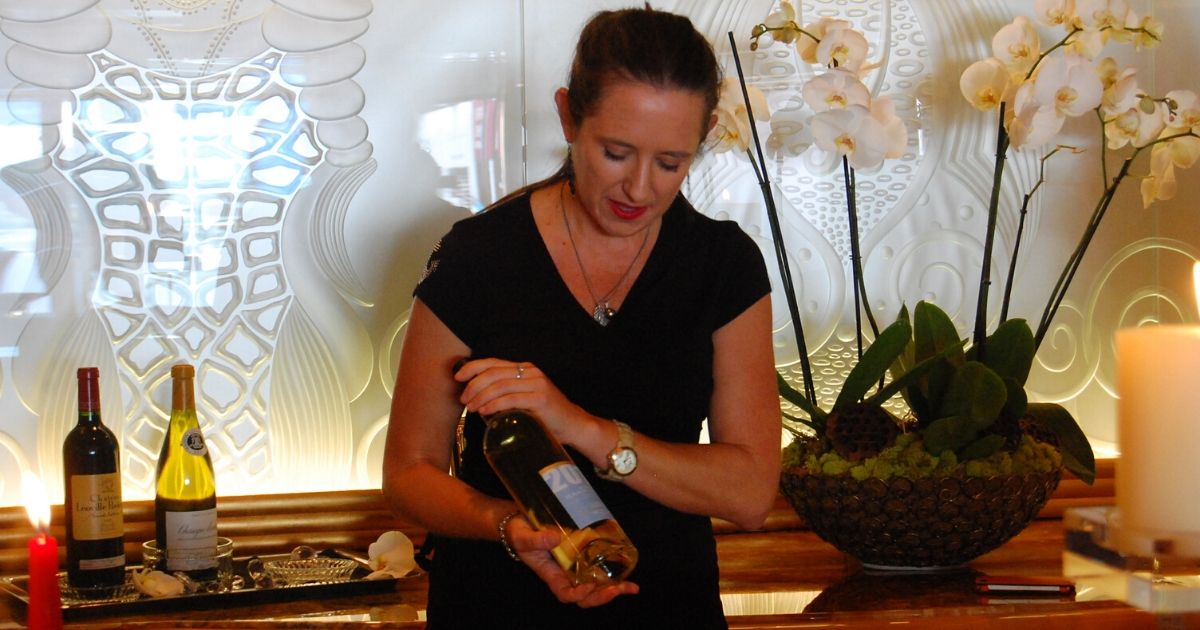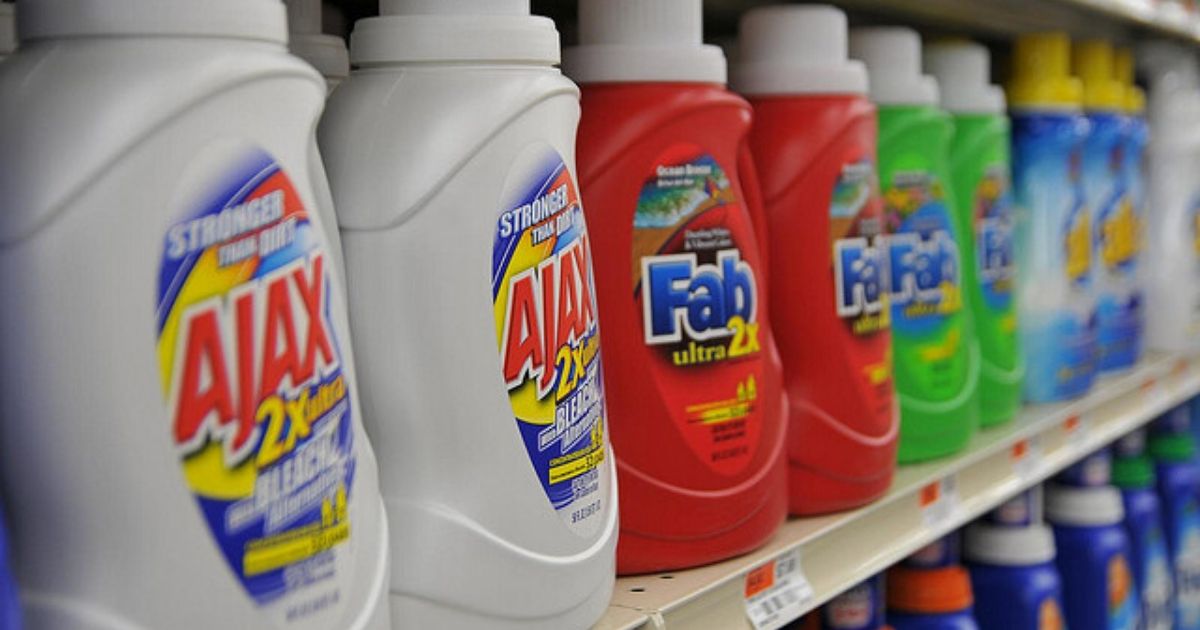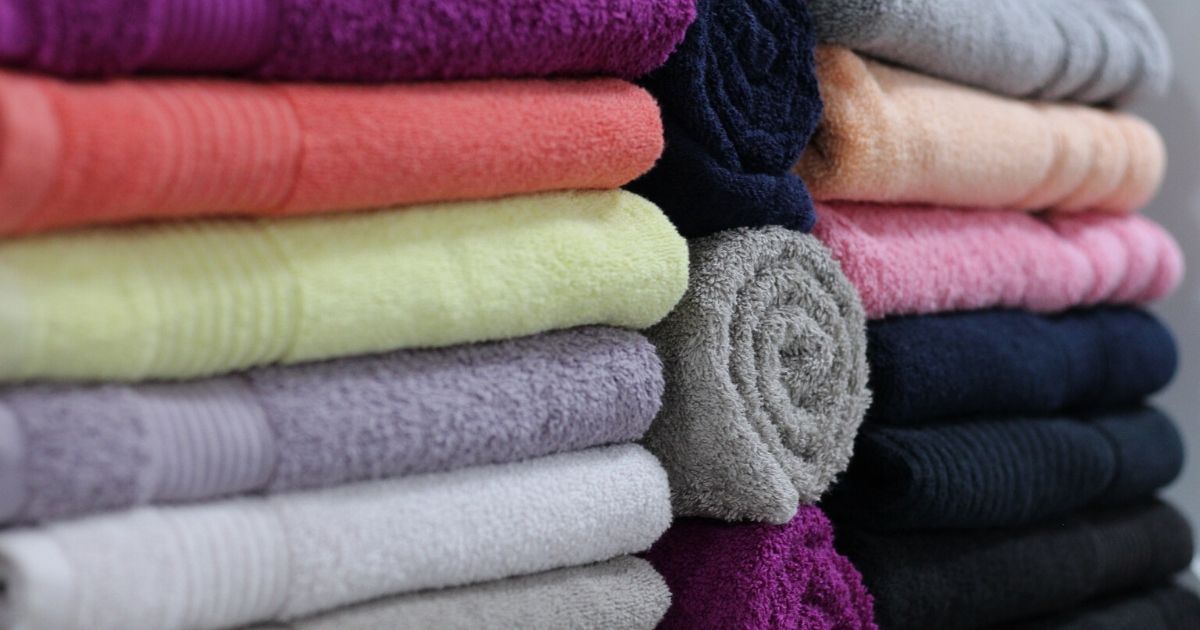How to Compile an Interior Manual for Steward/esses
An integral part of managing a successful steward/ess team on board, whatever the size of the yacht, is having a comprehensive steward/ess training manual. I have always found it extremely challenging and unprofessional when, upon joining a new yacht, I was unable to find a single note anywhere on owner preferences, scheduling, inventories, SOPs, general interior rules and regulations etc.
This happened to me with almost every new chief stew and purser position I accepted, which meant that I had to spend immense time and effort compiling a training manual myself - time that you don’t always have just before a busy season or at the end of a period in the yard.
In my view you can’t achieve the standards of service a guest or yacht owner deserves without giving proper training and information to your team, and it's unfair to expect them to ‘guess’ what you need and expect from them.
In this column we'll take a look at some suggested content for a training manual for an efficient, organized and well-run interior team. Obviously each manual must be adapted for the individual yacht.
Introduction
A brief ‘welcome aboard’ with some positive input is a good starting point. It is important to make the new steward/ess feel like they are not just receiving a book full of lists, rules and regulations, but that it also leaves the door open for them to approach you – and to feel safe and welcome to do so.
It's very important to add a complete and thorough description of all the on board operational documents – I always discussed this with the captain, chief officer and other senior officers to ensure I communicated the correct and most up to date versions.
Onboard Operational Procedures and Documents
-
Master list and emergency safety plans and all emergency procedures, as well as emergency exits – I always find it works well to add photos of donning a life jacket, where emergency exits are located, etc.
-
MSDS (material safety data sheets) for all cleaning and housekeeping products.
-
All applicable and updated SOPs (standard operating procedures).
-
NDA and applicable confidentiality forms/contracts.
General Operational Information
-
Crew information – phone numbers, laundry days, cabin, etc.
-
Crew preference sheets.
-
Crew medical information and allergies.
-
A list of all interior inventories.
Inventories
-
Location of all interior items – bilges, under stairs, under beds, etc.
-
Galley and service items.
-
Salon/dining room/stew pantry storage.
-
Decor/theme storage and location.
-
Table setting items, napkins and napkin rings.
-
DVD lists.
-
Cabin inventories.
-
Crew bilge and other bilge inventories.
-
Crew mess inventory.
-
Master cabin and all guest cabin storage inventories.
-
Linen closet inventory.
-
Medical inventories - guests OTC (over the counter medicine), crew OTC, MCA.
Audio-visual and Equipment Instructions
-
Full instructions on how to operate all AV and other equipment in the interior.
-
Audio visual systems.
-
Internet and satellite systems.
-
All applicable equipment on board – instructions with photos.

Steward/ess Duties and Scheduling
Our next section would cover steward/ess duties, regulations and scheduling – let’s look at some suggested documents for this very important section.
-
A description of the steward/ess responsibilities on board.
-
Detailed job description for each steward/ess position, including the chief stew and purser - it is only fair to be clear and open about each team member’s responsibilities, including team leaders.
-
Crew assessment/performance/evaluation forms – include examples of these to provide open and honest information regarding what individuals will be evaluated/assessed on, and how often.
-
Future performance planning for each steward/ess – this should be fluid and adjusted as each stew's performance is measured, assessed and discussed with the individual.
-
Daily, weekly, monthly maintenance scheduling.
-
Daily worklists and responsibilities (including the laundry room and crew mess).
-
Crew head and cabin cleaning checklists.
-
General interior worklists and checklists.
-
Detailed cleaning checklist for each area on board.
-
Interior cabin cleaning procedures.
-
Sheet change days for which cabins.
-
A list and explanation of cleaning products and how to use them.
-
Dayworker worklists and checklists.
-
Air conditioner monthly cleaning and maintenance sheets.
-
On-charter dinner service guidelines.
-
On charter daily routine for steward/esses.
-
Pre-arrival checklists.
-
General tips for steward/esses with guests on board.
-
Guidelines for stowing for sea.
-
All owner and guest information.
Owner Preferences/Cheat Sheets
-
Each guest’s preferences and cheat sheet - thorough briefing/information on each guest (especially if it's a private yacht).
-
Clothing inventories of each guest.
-
Guest toiletry inventories and preferences.
-
Explanation of each guest, family tree, etiquette, titles, protocols, do’s and don’ts etc.
-
A list of service items and favourite glasses/dinnerware, etc. that the owners like, for instance: “Mr Smith only drinks out of the Christofle whiskey tumbler and never wants wine out of the Riedel glass set, always use the Robbe and Berking Red Wine glass for his wines.” – photos are crucial in this section.

Events/Parties On Board
-
Events/parties on board - preparation/mise en place checklists.
-
Contact information for chandlers, suppliers, and caterers.
-
Theme night ideas and set-ups.
Flowers
-
Cabins where they go, how the arrangements should be made/look.
-
Flower order sheets.
-
Flower suppliers worldwide.
Alcohol and Beverages
-
Preference sheet for guests.
-
Alcohol and beverages inventory and order sheet.
-
Alcohol inventory – border control.
-
Wine list.
-
Wine training – containing notes on terroir, region, grape in wine, food and wine pairing, cheese and wine pairing.
General Laundry and Ironing Information
-
An explanation of your crew laundry labelling system.
-
An explanation of your guest laundry labelling system.
-
Include a complete list and explanation of all the onboard laundry products and how to use them.
-
A list of laundry care symbols and their meaning.
-
A list of common fabrics (upholstery and clothing) that the stew team will be working with on board and how to clean/handle each fabric (pay special attention to dry clean only fabrics, such as silk, etc.).
-
Sheet changing days and laundry schedule – all crew.
-
Crew uniform inventory.
-
Crew uniform description.
-
List of crew uniform suppliers, their contact details and each item they provide.
-
Crew uniform sign-out document.
-
Guest giveaway gifts – such as T-shirts, capes, etc. (included in uniform order).

In the Laundry
-
Galley tea towels must always be washed separately from everything else. Cleaning cloths also need to be washed separately. Both should be washed at 95 degrees C but, for hygiene reasons, they must never be washed together.
-
Table linens – place mats and napkins also get washed separately. Delicate linens must be washed in a delicates bag and all napkins and place mats need to be hang-dried. They will shrink and become misshapen in the dryer. If in doubt, hand wash the napkins instead of running through the washer.
-
Galley rags, napkins and tea towels must be collected every night at the end of shift and washed or soaked.
-
Guest clothing and linens should be ironed and put away as soon as possible. Do not leave guest linens to build up, the longer they sit and pile up, the more potential for them to get marked and stained, and the harder it is to tackle the pile.
-
Crew clothing should be returned to the respective cabins at the end of each day. Don't forget what is hanging up. On charter, crew sheets are only washed on the allocated day.
-
White in-service uniforms must be treated before they go through the wash (chef jackets, polo shirts, epaulet shirts, etc). Check for stains and check the collars. If the stain has not come out in the wash, treat again. Do not put it through the dryer as it will make the stain set.
-
Always make sure that the laundry room is left clean and organized after your laundry shift. Clean the floor, wipe down all the machines, regularly clean out the filters of the dryers, drain the washing machines, keep the liquid dispenser of the washing machines clean.
-
All table linens, guest bed linens and epaulet shirts must be starched with spray starch and water.
General Laundry Tips and Rules
-
Only use laundry detergent in the machine, never powder.
-
Laundry must be sorted: check pockets, check for stains and check the labels, and separate colours and delicates from stronger fabrics.
-
Guest laundry always gets priority – always check the labels before washing!
-
Guest clothing: If in doubt whether to put in the washing machine, send to the dry cleaner instead. If ever in doubt about how to clean guest clothing, ask the chief stew first!!!! Remember to label all guest laundry in the CABINS before taking to the laundry room.
-
If guest clothes are sent out to dry cleaner, always keep bathrobe belts on board – they disappear otherwise!
-
Guest linen to be changed as per the sheet change rota.
-
Do not wash more than one large guest bath sheet in the washing machine at a time, it unbalances the washing machine and can cause it to stop or leak.
-
Make sure crew use their laundry bags.
-
Check and stain treat ALL whites before washing.
-
Treat all stains with the appropriate stain remover, if in doubt ask.
-
Do not tumble dry unless the stain has been removed otherwise it will set into the fabric.
-
If you washed boat fender covers or something really dirty, run the washing machine with bleach (empty machine) afterwards, before you wash crew clothes. Then make sure to wash a load of whites after the bleach cycle.
-
NEVER mix colours and whites.
-
NEVER mix crew and guest laundry.
-
NEVER mix galley rags with other laundry.
-
NEVER mix cleaning rags and tea towels.
-
NEVER mix engineers overalls with other laundry.
-
NEVER mix cleaning rags with other laundry.
-
Be careful when you iron clothes – if in doubt about what heat to use – ASK! Always use the iron cloth over delicates and black/dark items.
-
Roller iron sheets, napkins, place mats and tablecloths when SLIGHTLY damp and then hang dry.
-
Hang the ironed napkins and guest pillowcases on a ‘clip-hanger’ during guest trips – they will be ready for use anytime the service or cabin stews need to use them.
-
ALWAYS make sure that guest clothes are hanging on guest hangers when returned to guest cabins.

General Ironing Tips
- What to spray on sheets, pillowcases, tablecloths, duvet covers, napkins: 1/4 spray starch mixed with 3/4 water in a spray bottle. For an eco-friendly alternative, mix 2 – 3 teaspoons of corn starch with 500 ml of water in a spray bottle.
- Cleaning the vent holes: Often the vent holes in the bottom of the iron will become clogged. Take an ear bud and toothpick and clean out each hole individually. Always empty a steam iron after each use to prevent clogging.
- Cleaning the internal parts: Fill the steam iron with equal parts water and white vinegar. Let it steam for several minutes. Disconnect the iron and let it sit for one hour. Empty and rinse with clear water using the same process. Be sure to iron over old fabric prior to ironing clothes. If your iron cannot be cleaned with vinegar, clean it as per the manufacturer’s instructions.
- Energy efficient ironing: Put aluminium foil under the ironing board cover on the board. It will reflect heat onto the garments and cut ironing time.
Inservice – Guests On
-
Never leave any cleaning products lying around in guest areas, be sure to put things away in their appropriate place. As soon as a guest leaves any area, immediately enter and clean up/fix that area.
-
Keep daily tasks up to date, especially laundry. The boat will not run efficiently if tasks are left to build up.
-
Make sure you finish all of your jobs at the end of the evening before you sit down and stop work.
-
Do not go off to bed at the end of the evening and leave dishes on the sink, either clean or dirty. Wash them, dry them, and put them away. Leave the boat clean and tidy as the guests could get up in the night and may come into the pantries or bar to get a drink. CONSIDER THE PERSON WHO HAS TO GET UP IN THE MORNING AND CLEAN UP YOUR MESS.
-
If you are on late stew, then you need to be available to the guests until they go to bed, or until they dismiss you for the evening. That means checking on them regularly, offering drinks, etc.
-
When you return from a break, always check in with the stew on duty, find out what is happening with the guests' movements, and see if anyone needs help or has something specific that they need you to do. Please return after your shift in a timely manner.
-
REMEMBER – effective communication is the single most important part of making the boat, and the guests' vacation run smoothly.
-
Always wear your radio and turn it down low when you are around guests. Ensure it is charged at the end of each shift.
-
Always be alert and attentive to the guests and what is happening around you. If you are speaking to a guest, or are visible to a guest, do not slouch or lean on furniture or on the boat itself. You must look and behave in a professional manner at all times.
Guests & Service
Guest Information and Documents
-
Breakfast set-up – for owners.
-
Breakfast set-up – charters.
-
Checklist for day packs.
-
Charterer information/preferences (especially for return charter guests).
-
Detailed guest preferences – especially on a private yacht.
-
Set-up/mise en place lists for lunch and dinner.
-
Stewardess schedules on charter.
-
Guest dislikes, likes cheat sheets.

Guest Service and Table Service Training
-
Summary of various styles of service used on board.
-
Photos of different service items/cutlery, etc. and what they are used for.
-
Basic cocktail recipes and specific explanations of the owner’s/guests’ favourite cocktails and how to prepare it.
-
A good idea is to prepare a fancy picture book that can be laid out in the bar area with a variety of cocktails offered on board – this can be used for training and to encourage guests to order cocktails from the book.
-
Another idea is to use photos of how to make each cocktail rather than just give the recipe.
-
How to do turndowns, turnups and cabin checks while on charter.
-
Basic food health safety guidelines to be used on board.
General Service and Guest On Rules
-
American, French, English, synchronized service – make sure stews understand these different styles and are shown (and practice) these styles often.
-
If you are serving from the left, you will serve with the left hand, that way you are creating open body language towards the guests. Likewise, when serving drinks, you should serve with the right hand, especially wine, presenting the label to the person whom you are serving. Remember to put a wine napkin around the top of the bottle.
-
Discuss seating arrangements and menus with the host before every meal – normally the chief stew/head of service does this.
-
ORDER OF SERVING: How do you serve your guests and who is served first, second, third, etc.
-
Always know exactly what is being served and be able to explain this to your guests (such as ingredients, terminology, origin of food, pronunciation, cooking method, etc.) REMEMBER ALWAYS to have a smile while serving!!!
-
EYE CONTACT is also very important - if you never gain eye contact with guests they will feel as though you are trying to avoid them. They are there to have a great time, enjoy their meal, and you can create the atmosphere for this!! Even if you do not say anything to them, a smile and eye contact will enhance this atmosphere of relaxation and fun.
-
When serving pie or cake slices in a triangle, make sure the cake/pie point shows towards the guest when putting it down in front of them.
-
Always discuss with the chef/chief stew/head of service how plates will be presented to guests – meat to the bottom, vegetables at the top, potatoes on the left, whichever way the chef wants to present his/her food. This ensures that dishes are put down the same way in front of all guests.
-
Make sure that everything on the table is neat and orderly before a meal, knives all lined up, place mats one inch from the border of the table, spoons facing the same direction. Check the table a few times before a meal, you might find something that you have missed. Specifically check that glasses and silverware have no fingerprints on them.
-
Salt and pepper shakers are always put down next to each other: Salt on the left and pepper on the right.
-
If you are cleaning in a guest cabin and that guest enters the room, assess the situation – if they are just popping back to collect something, politely acknowledge them and discreetly carry on with what you are doing. If, however, they appear to be wanting to use the bathroom, or wish to get changed, lie down, etc., politely acknowledge them and then leave the room, taking all cleaning things with you.

Helpful Hints and Chief Stew Pet Peeves
Something I've always found very helpful is a section I called ‘Chief Stew Pet Peeves’. It isn’t fair to expect your team to simply guess what your expectations are and what will cause irritations and misunderstandings.
This section can contain general notes and tips such as:
-
Flush all heads and run taps twice weekly and put ice and vinegar down each toilet once a week.
-
Run the espresso machine daily. Ensure that water is always circulating through all the nozzles. Put milk nozzle into jug of hot water and steam – to flush all milk out of nozzle.
-
Once a week run master cabin Jacuzzi with baking soda and vinegar. When using cleaning products, never spray directly onto the surface. Always spray on a rag or cloth first. ONLY USE PRESCRIBED CLEANING PRODUCTS!! See elsewhere for a complete list of cleaning products to be used on different surfaces.
-
Always carry cleaning products in a caddy and use drop cloths to protect carpets and surfaces. Do not put cleaning products or the caddy on any surfaces without using a protective cloth first.
-
Always use a caddy for ALL cleaning products and NEVER put cleaning products, caddies, buckets or anything else directly on top of any counter surfaces without a towel underneath.
-
If you find something is broken or does not work, please report it to the chief stew and engineers immediately.
-
If you notice another crew member or an outside contractor has put something on the counter tops, remove it to the ground and find a towel to protect the surface.
-
If anything unusual happens in the interior of the boat, and the chief stew is not there to deal with it immediately inform them as soon as possible. Never assume that they have heard about it elsewhere.
-
Cleaning caddies must not be left in guest areas overnight. At the end of each day, please bring it back to the laundry and refill all products and cleaning tools.
-
Never leave any rubbish lying around. Always pick things up after yourself, don't leave it to someone else.
-
When you start a job, make sure you finish it properly. If you are unsure of anything, it's better to ask than to do it incorrectly.
Hopefully this will inspire you and provide you with some useful ideas to put together your very own (maybe first!) training manual for your steward/ess team. Best of luck!
A last note
In my opinion, your training manual isn’t worth the paper it's written on if you do not take a few days to work through it with your team on board. It is crucial to make time for onboard training before your guest season kicks off – a day or two, hopefully more, would do wonders for your team’s basic knowledge of the operations on board and to know what is expected of them, improve communication and teamwork.
If time and budgets allow, another idea is to bring trainers on board – for cocktails, cigar, barista, wine, etiquette and general interior steward/ess training. Also remember that all work and no play will make Jack/Jane a very dull stew, so make time for team building and have some fun together! Maybe get a masseuse to come on board for massages or go for a team manicure/pedicure after the season.
“Leaders are those who always empower others” – Bill Gates.


Post your comment
You cannot post comments until you have logged in.
Login to post a commentComments
No one has commented on this page yet.
RSS feed for comments on this page | RSS feed for all comments